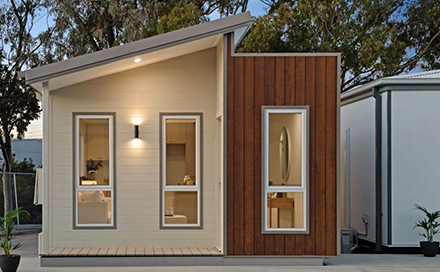State Governments across the nation are planning to solve the housing crisis by, obviously, building low cost affordable housing.
And lots of them.
In Queensland $23 million has been poured into the Immediate Housing Response for Families plan to provide emergency accommodation for families experiencing homelessness.
The NSW State Government hopes to build 377,000 new houses.
NSW Planning and Public Spaces Minister Paul Scully believes modular construction is definitely a significant part of the solution.
In Tasmania there is the pledge this week by the Tasmanian State Government to deliver more homes and ending homelessness in Tasmania by 2043.
Tassie’s Minister for Housing and Construction Nic Street spoke of appropriate and affordable housing for all Tasmanians.
In both cases there was a quick response on how it could be done and the best way it could be done.
Building company Fleetwood Australia’s CEO Bruce Nicholson said Fleetwood had the capacity to deliver up to 1500 new homes annually, with seven factories providing the nation’s largest manufacturing capacity.
“There is no faster way than modular building to swiftly deliver the volume of housing needed in New South Wales,” he said.
Tasmanian Forests Products Association CEO Nick Steel said that while the strategy was bold – remember Prime Minister Bob Hawke’s election pledge in 1987 that “By 1990, no Australian child will be living in poverty” – the use of timber in the construction will bring added environmental benefits for the state.
Modular construction? Timber? Does it work? Of course, it does. It doesn’t take a lot of thinking to put the two and two together.
It’s the sort of solution that State Governments everywhere should be arriving at – build lots, build modular, and build out of timber.
The only fly in an otherwise most suitable ointment is that it is already taking far too long to get houses built.
FWPA Statistics & Economics Manager Eric Hansnata wrote recently that Australia’s system of housing construction is in serious trouble.
In the June quarter of 2023, far from reducing as more houses were completed, the average time it takes to complete a house actually increased – by mid-year it was taking 9.96 months to complete the average house.
He says that completions are simply taking way too long to build and deliver to the homeowner. The risks for builders, bankers, suppliers and home buyers alike, is that time brings into play many other uncertain variables: cost increases, re-work, interest rate rises, defaults and so on are all exacerbated by the passage of too much time.
The aim of delivering affordable housing to Australians is admirable and needs to be supported. There is an urgency here.
But the reality of supply chain issues must not be overlooked in the rush to deliver political promises.






